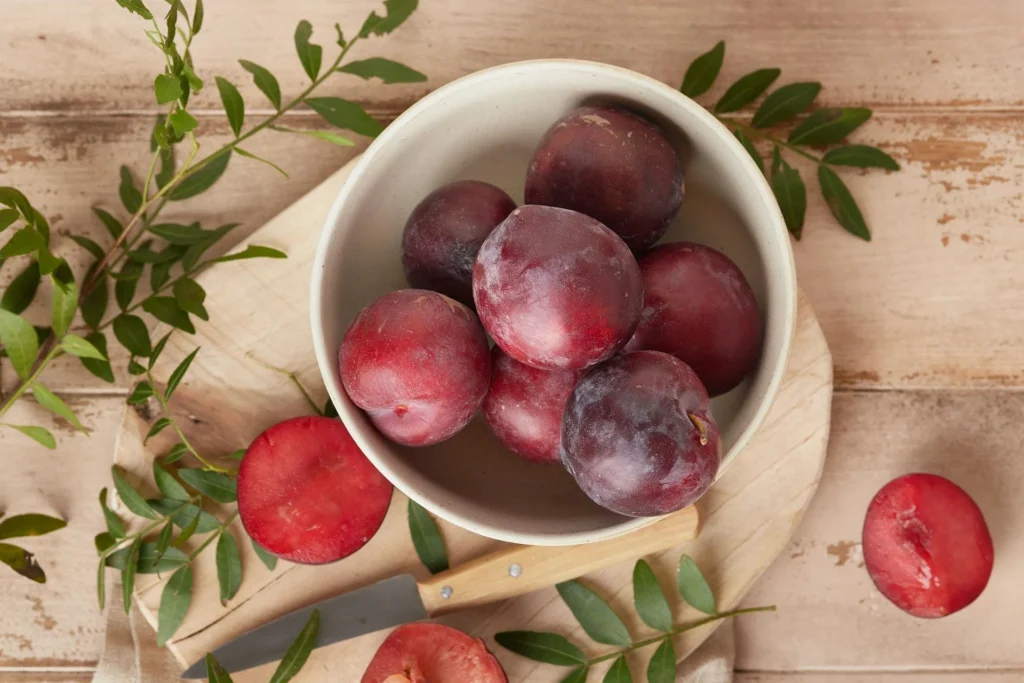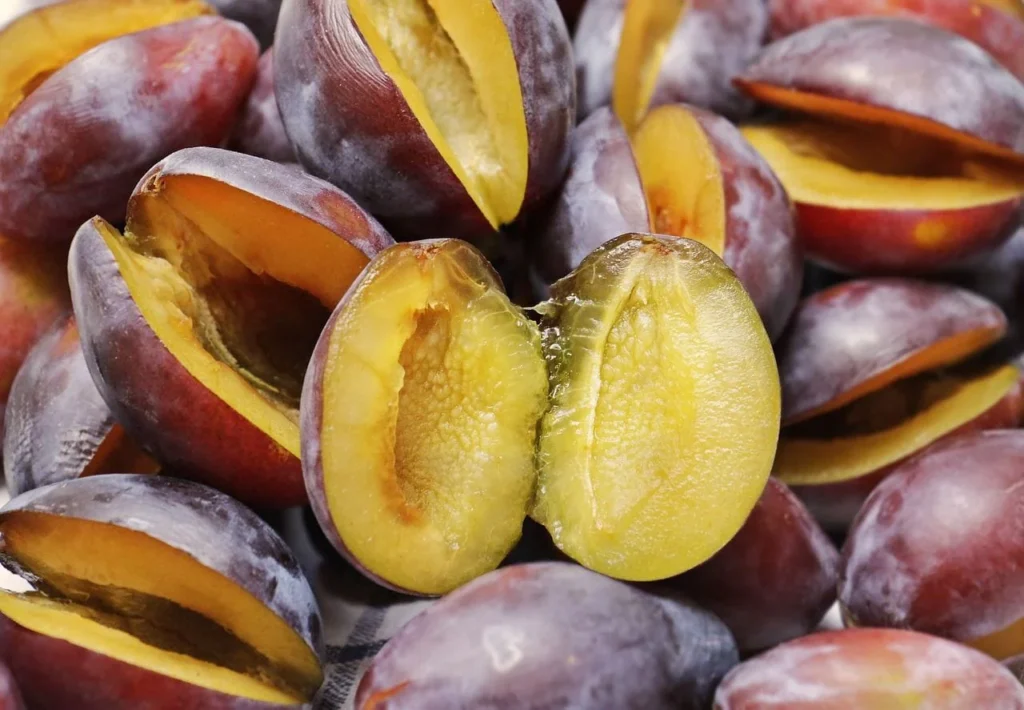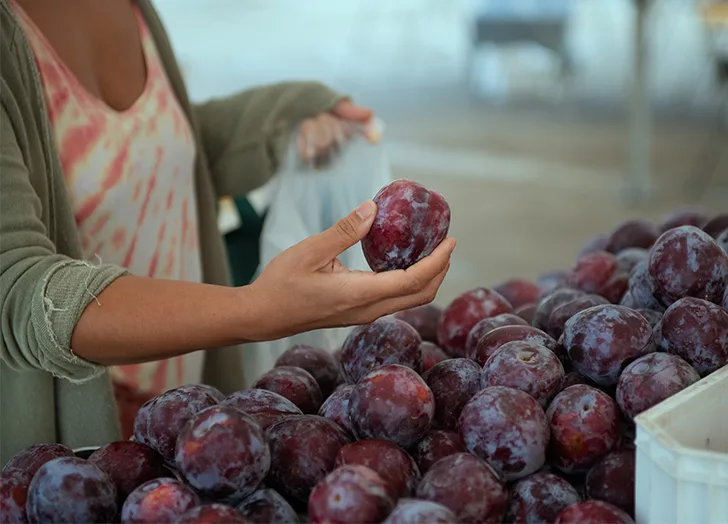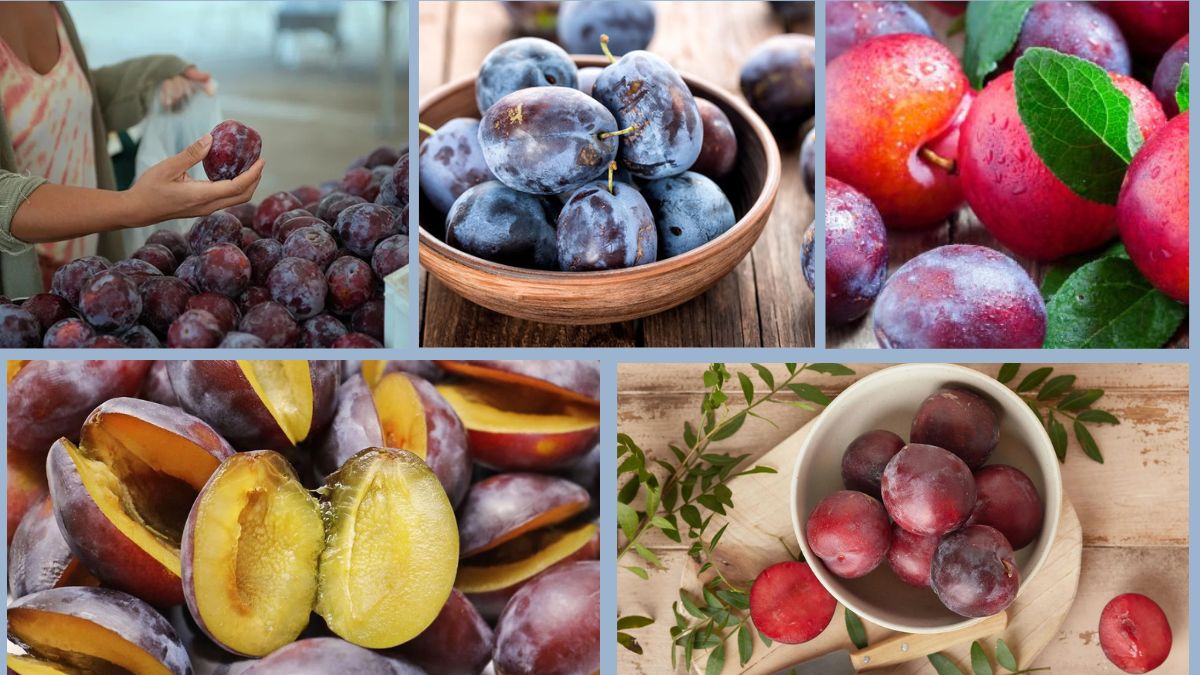Plums are one of summer’s sweetest, juiciest pleasures. These beautiful stone fruits come in a variety of colors, flavors, and textures — from tart yellow varieties to deep red and purple ones that are bursting with syrupy sweetness. Whether eaten fresh, baked into desserts, or made into jams, plums are best when perfectly ripe.
But their shelf life is short, and improper storage can lead to disappointing results — bruising, shriveling, fermentation, or even mold. That’s why knowing how to store plums for optimal ripeness is essential to enjoying their best flavor, reducing food waste, and keeping your kitchen well-stocked with ready-to-eat fruit.
This comprehensive guide covers everything you need to know about storing plums — from when they’re rock-hard to when they’re fully ripe or even slightly overripe — using only natural, vegetarian-friendly methods.
Understanding Plums and Their Ripening Process

Like other climacteric fruits (including peaches, bananas, and avocados), plums continue to ripen after they’ve been harvested. This is due to ethylene gas, a naturally occurring plant hormone that triggers the softening, sweetening, and deepening of flavor and aroma.
Plums are usually harvested slightly underripe to avoid bruising during transport, which means they often reach your kitchen still firm and in need of ripening.
Step 1: Identify the Ripeness Stage

Before storing your plums, determine their current ripeness:
| Stage | Feel | Color | Aroma | Action Needed |
|---|---|---|---|---|
| Unripe | Hard, no give | Greenish or dull skin | None or faint | Ripen at room temperature |
| Ripening | Slight give near stem | Richening color | Lightly fragrant | Keep ripening or refrigerate |
| Ripe | Soft but not mushy | Vibrant color | Sweet aroma | Eat or refrigerate immediately |
| Overripe | Very soft, wrinkled skin | Dull or spotty color | Fermented smell | Use immediately or freeze |
Step 2: Storing Unripe Plums (To Encourage Ripening)

Let Plums Ripen at Room Temperature
If your plums are still firm and not fragrant, allow them to ripen on the counter naturally:
- Place them stem-side down on a clean kitchen towel or in a fruit bowl.
- Keep in a cool, shaded area away from direct sunlight.
- Space them apart to prevent bruising.
Time to ripen: 2–4 days depending on variety and room temperature.
Tip: Rotate them gently once a day to avoid flat spots or bruises on one side.
Speed Up Ripening (Naturally)

If you need your plums ripe sooner:
- Place them in a paper bag with an ethylene-producing fruit like:
- Apples
- Bananas
- Kiwis
- Fold the top loosely and keep at room temperature.
The paper traps ethylene gas and speeds up the ripening process.
Time to ripen: 1–2 days
Avoid plastic bags — they trap moisture and can lead to mold.
Step 3: Storing Ripe Plums (To Preserve Ripeness)

Once plums are soft, fragrant, and flavorful, it’s time to slow down ripening and extend shelf life.
Refrigerate Ripe Plums
- Place ripe plums in the refrigerator crisper drawer.
- Store them loose or in a reusable mesh produce bag.
- Keep them away from strong-smelling foods — plums absorb odors easily.
Shelf Life in Fridge: 4–6 days
Note: Cold temperatures slow down enzymatic activity, preserving firmness and flavor longer — but eating them at room temperature brings out their full sweetness.
Step 4: How to Store Cut or Sliced Plums
Once cut, plums begin to oxidize and soften rapidly.
Store Cut Plums Properly:
- Sprinkle exposed flesh with a little lemon or lime juice to prevent browning.
- Place slices in an airtight container and refrigerate immediately.
- For best quality, consume within 1–2 days.
Citrus juice not only preserves color but also adds a subtle tang that complements the fruit.
Step 5: Freezing Plums (For Long-Term Use)
Got a large batch of ripe plums you can’t finish in time? Freeze them for later use in smoothies, baking, or jams.
How to Freeze Plums:
Option A: Sliced (Best for smoothies, pies, and sauces)
- Wash and dry the plums.
- Cut in half, remove pits, and slice.
- Toss slices with lemon juice to preserve color.
- Arrange on a baking tray in a single layer and freeze for 3–4 hours.
- Transfer to freezer-safe bags or containers.
Option B: Pureed (Best for desserts or baby food)
- Blend ripe plums into a smooth puree.
- Pour into ice cube trays or silicone molds.
- Once frozen, store in labeled bags.
Freezer Shelf Life:
8–10 months
This method uses no sugar, no animal products, and preserves the natural flavor of the fruit.
Common Mistakes to Avoid When Storing Plums
Avoid these common pitfalls to ensure your plums stay fresh and delicious:
Refrigerating Too Soon
Putting unripe plums in the fridge halts ripening, resulting in a bland, mealy texture.
Stacking Fruits
Plums bruise easily. Avoid piling them on top of each other, especially when ripe.
Moisture Retention
Avoid washing plums before storage. Excess moisture can lead to mold. Wash just before eating or using.
Leaving Ripe Plums Out Too Long
Once ripe, plums should be refrigerated unless eaten within the same day.
Creative Uses for Overripe Plums
Even overripe or slightly bruised plums can still be delicious — just use them creatively:
- Smoothies: Blend with bananas and almond milk.
- Chutneys: Simmer with ginger, vinegar, and brown sugar.
- Baked Goods: Add to muffins, tarts, or quick breads.
- Jam or Fruit Spread: Combine with lemon juice and a touch of natural sweetener.
- Vegan Sorbet: Puree frozen plums with a splash of lime juice and freeze again.
All these options are vegetarian-friendly and ideal for zero-waste kitchens.
Summary Chart: Storing Plums at Every Stage
| Stage | Storage Method | Duration | Notes |
|---|---|---|---|
| Unripe | Room temperature | 2–4 days | Ripen on counter or in paper bag |
| Ripening | Room temp or fridge | 1–2 days | Monitor closely to avoid overripening |
| Ripe (whole) | Refrigerate in crisper | 4–6 days | Eat at room temperature for best flavor |
| Cut/Sliced | Airtight container in fridge | 1–2 days | Sprinkle with lemon juice to reduce browning |
| Frozen | Airtight container in freezer | 8–10 months | Use in smoothies, desserts, or sauces |
Final Thoughts: Store Smarter, Savor Longer
Plums are fleeting seasonal gems, but with the right storage techniques, you can enjoy their sweet, tart, and juicy richness for days or even months longer. The key is knowing when to ripen, when to refrigerate, and how to preserve them naturally.
No fancy equipment or additives are needed — just a little knowledge and some lemon juice go a long way.
So the next time you bring home a bag of plums, don’t rush to eat them all at once. Follow this guide, store them smartly, and enjoy perfectly ripened plums whenever you’re ready — all without a single drop of non-vegetarian preservatives.





